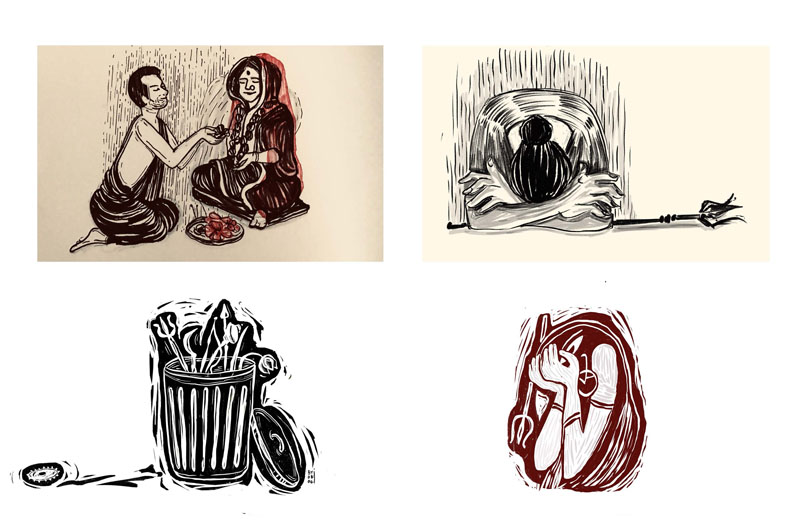यत्र नार्यस्तु पूज्यन्ते रमन्ते तत्र देवताः ।
यत्रैतास्तु न पूज्यन्ते सर्वास्तत्राफलाः क्रियाः ॥ ५६ ॥
yatra naryastu pujyante ramante tatra devatah |
yatraitastu na pujyante sarvastatraphalah kriyah || 56 ||
(quoted in Manusmriti)
Meaning:
The divine is extremely happy where women are respected, where they are not, all actions (sacrifices, libations, and charities)all such acts are fruitless.
Ever since the beginning of human civilization, human societies have been inclined towards specifying the separate parts, moral duties, rules about displaying a particular behaviour and shares of responsibility, and even different feelings to men and women. By this, they used the biological distinction of sex (between male and female) to formulate and apply the social differentiation of gender (between masculine and feminine).
We are culturally rich people with various religions and their belief system. And among which there are endless God and goddess that had portrayed and symbolized nature, birth, fertility, power.
This sloka is very much relevant in a country which worships woman, yet they are not safe in their own house. On the one hand, we practice endless rituals, keep credence of shakti and blessing of the goddess, and on the other hand, we are treating the same with other downcast rituals, practices, and long drawn traditions of dominance since centuries.
For many years these atrocities are being highlighted, the predicament of the woman's in the commonality. Our society is associated with the faith and culture of epic, Puranas, smritis, and Upanishads. There is various symbolism for male God and female goddess. This belief system bounds rituals and customs. The practices of keeping many pictures and idols in-home, worshipping them regularly, Using the powerful imagery of paintings, sculptures, and writings, the celebration of Kali and Durga Puja explores and illuminates the rich meanings of feminine divinity. One of Hinduism's distinctive features is the worship of devis or feminine deities, which is a very ancient and widespread practice of India.
But then our moral values defy
The Narratives and the images are created in an attempt to feature the contrast of the belief system in society—an attempt for self-questioning.
Through this project, I am trying to point out the irony of the oppression of Indian women and bring out some contrast that we overlooked when it comes to idolizing Hindu deities, a synecdoche of women.
Case Study Download:
• Prahasanam (Mockery)......


